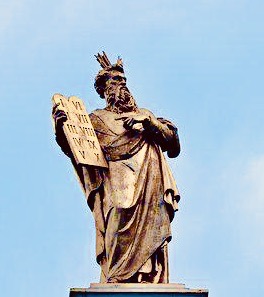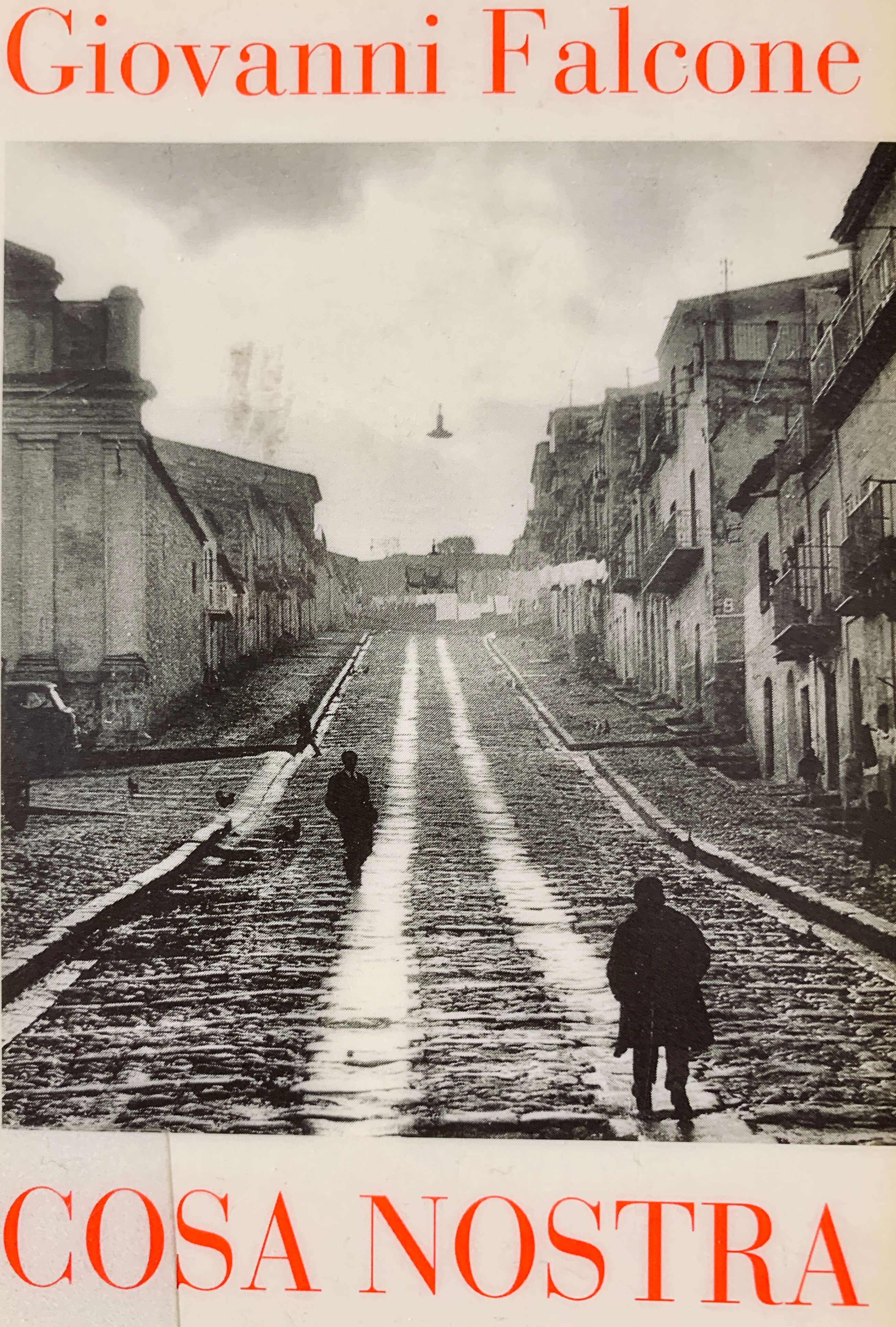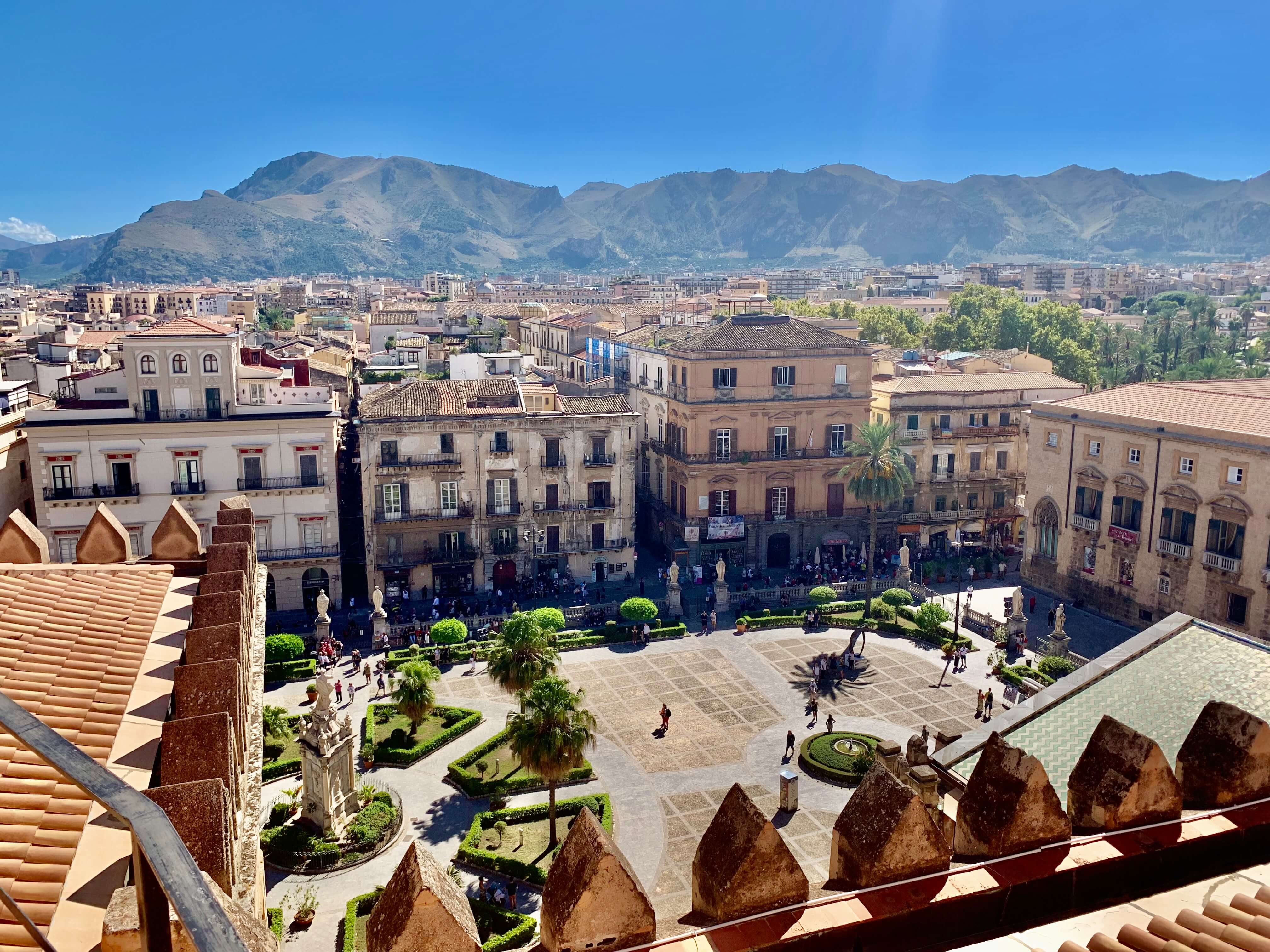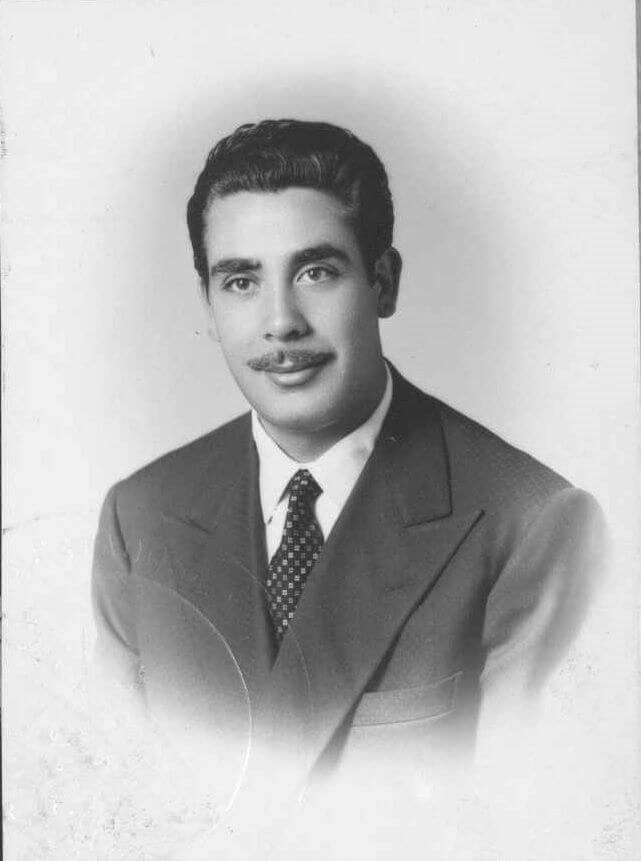- Home
- History of Sicily
- History of the Mafia
History of sicilian mafia: from its origins to the present day
When you mention Sicily, the first thing that pops into many people's heads is the Mafia. Not that many of them know much about the history of Sicilian Mafia. They have just been consuming popular culture.
Even when Palermo was facing its bloodiest mafia wars, the international press covered it only a little. Films such as The Godfather, then again, are familiar to millions.
 Conca D'oro in Palermo, the birthplace of the Mafia. The place was filled with citrus groves in the 19th century. (Photo by Gio la Gamb.)
Conca D'oro in Palermo, the birthplace of the Mafia. The place was filled with citrus groves in the 19th century. (Photo by Gio la Gamb.)The Sicilian Mafia, a.k.a. Cosa Nostra, enjoyed its golden age from the mid-1970s to the mid-1980s. At least when it comes to profit. During that period, it created a worldwide system of heroin production and distribution.
The heroin business increased revenues exponentially. But, as money came pouring in, the greed also grew. This led to the so-called Great Mafia War at the beginning of the 1980s.
If the Mafia was Sicilian by birth, the fight against it was also left to Sicilian judges, police, and prosecutors. They operated under the constant threat of death in conditions that were far from favorable.
This is the story of the history of Sicilian Mafia. The story begins with the unification of Italy and continues to this day.
Origins of the Mafia in Sicily
The roots of Cosa Nostra go back to the second half of the 17th century and the first half of the 19th century. Still, it became a fully organized criminal organization only after the unification of Italy in 1861.
At that time, Sicily was plagued by poverty and a lack of proper infrastructure. The legal system was also seriously deficient. When conditions deteriorated even further after Italian unification, the seeds of Cosa Nostra were sown. And so, the history of Sicilian Mafia begins.
Initially, the Mafia's activities were focused on extortion. It all started when wealthy landowners hired local bandits to protect their land and keep the workers quiet. Soon, these bandits realized more profitable ways to make an income.
They could extort "protection money" from landowners. If the money was not paid, the landowner was at the mercy of the bandits. The same bandits to whom he had paid for protection in the first place.
Around this time, the Mafia began to organize itself into 'families' with a precise hierarchical structure. At the top was the boss, known as 'Don.' Under him were chiefs, the 'capos.'
Gradually, this criminal organization extended its tentacles to local governments through corruption or direct infiltration.
The main instrument of power was violence. The Mafia soon became known for its vendettas and assassinations, which it used to maintain control and settle disputes.
 Vito Cascio Ferro, the man who brought the Mafia to the U.S. At the beginning of the 20th century, a headless body was found in a barrel in New York. It was linked to Vito, who was sent back to Sicily.
Vito Cascio Ferro, the man who brought the Mafia to the U.S. At the beginning of the 20th century, a headless body was found in a barrel in New York. It was linked to Vito, who was sent back to Sicily.The late 19th and early 20th centuries saw a great wave of emigration, especially to the United States. Poverty and the presence of the Mafia accelerated the Sicilians' desire to leave their homes.
Alongside ordinary Sicilians, members of Cosa Nostra also spread around the world. In the United States, the organization profited in particular from the Prohibition. It made fortunes selling illegal alcohol and from the gambling business.
In Sicily, the Italian state made several attempts to eradicate the Mafia but with little success. The most serious attempt was made by Mussolini. He sent his Iron Prefect Cesare Mori to the island. Mori was given unconstrained powers to destroy the Sicilian Mafia.
As was his custom, Mussolini soon claimed to have won the war against the Mafia. As he went to Sicily to celebrate his victory, he was paraded in the car around Palermo. Next to him was the biggest mafia boss on the island. When Mussolini asked why he was there, the boss answered: "For your safety, sir."
All in all, Mussolini still managed to make the lives of mafia members more difficult. He didn't destroy the organization but forced it to go underground.
 Al Capone, the most famous of the Prohibition era gangsters, and an inspiration to many movies - including the original Scarface (1932).
Al Capone, the most famous of the Prohibition era gangsters, and an inspiration to many movies - including the original Scarface (1932).The Rise of Mafia's Power and Influence
During World War II, members of the Mafia assisted Allied forces, providing intelligence and other support. After the war, many Mafia chiefs rose to important positions with the help of the Allies.
This was motivated by the Allied's desire to fill the posts with anti-fascists. Since Mussolini had been Cosa Nostra's worst enemy to date, there was no shortage of "anti-fascists" among their ranks.
After the Second World War, the Sicilian Mafia grew its influence, both in the United States and in Sicily. The initial fuel for this growth was the post-war building boom. Later, the riches continued to grow exponentially, thanks to the heroin business.
The Mafia refined heroin in Sicily, from where they supplied it to the whole western hemisphere. The growing wealth did no good. In the end, it only increased the greed inside the organization. Eventually, this led to a lot of bloodletting within the Mafia.
 Trapani region was once known for its high mafia density and its many heroin refineries. They could be in places like this. Now, Trapani is an excellent base from which to explore the many attractions of western Sicily.
Trapani region was once known for its high mafia density and its many heroin refineries. They could be in places like this. Now, Trapani is an excellent base from which to explore the many attractions of western Sicily.The first mafia war took place between 1962 and 1963. It changed the leadership inside the Mafia and its 'families.' The same has been repeated throughout the history of Sicilian Mafia.
This has given rise to the talk of 'bad new' and 'good old' mafias. In reality, the Mafia's methods have always been violent. It's just that each new generation has been even more brutal than its predecessors.
The increase in violence also increased the police's and state's interest to destroy the Mafia. In the 1970s, the police caught many head figures of the organization.
The biggest of these was Tommaso Buscetta - "the boss of two continents." He was captured by the Brazilian police and sent to Italy to be prosecuted.
In Italy, Buscetta was put behind bars for what seemed like an eternity. In the end, he served seven years before being sent out. Soon, he was back to his old unlawful ways.
Buscetta later became the most prominent 'repentant' mafioso, as they are called in Italy. In other words, he turned informer for the state. But this required more than just being thrown in jail. The reason was the violence, which escalated exponentially in the early 1980s.
 Tommaso Buscetta (1928-2000).
Tommaso Buscetta (1928-2000).Thousands of murders between 1981 and 1984 are called the 'Second Mafia War.' But it was more like a purge. The Corleoneans - the 'peasants,' as they were called in Palermo - started to kill their opponents. None of their ranks were killed in all that time. At least by their enemies.
The Corleoneans wanted a bigger slice of the international drug trade. They were led by Salvatore "Toto" Riina. He mercilessly killed all his opponents, their relatives, and - in the end - even his own associates.
Riina's bloodbath shattered the last vestiges of "men of honor." What was so honorable about slaughtering the relatives of his enemies - women and children who had nothing to do with the Mafia? Or rewarding some of his most loyal men with a bullet in the head?
This turned many mafia members into informers for the state. The most notable of these was mafia boss Tommaso Buscetta. His witness was essential in the so-called Maxi Trial, which began in 1986 and led to the arrest of hundreds of Mafia members.
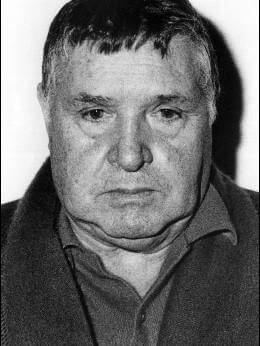 Salvatore "Toto" Riina (1930-2017).
Salvatore "Toto" Riina (1930-2017).The information Buscetta gave helped the police to piece together the clues it had gathered up until that point. One of these things was the structure of Cosa Nostra, which had hitherto remained secret.
This enabled the courts to hand down sentences to the mafia bosses. Buscetta declared that no murder inside the Mafia was made without the approval of the bosses. So, their very status made them responsible for the killings.
By the late 1980s, the Mafia was losing its foothold in Sicily. Until then, its members - especially the bosses - had walked laughing out of the courtrooms. Now, they could not be so sure about it anymore.
But that did not mean the Mafia had given up. On the contrary, Riina decided to wage another battle - against the Italian state.
History of Sicilian Mafia from the '90s to the Present Day
The third Mafia war (1991-1993) saw Toto Riina wage a terrorist campaign against all his opponents, including the Italian state. In the past, Cosa Nostra had avoided killing high-ranking state officials if possible. Now, all the restraints were released.
Toto Riina had even plans to split Italy into three separate states. This would allow the Mafia to have total control of the southern part of Italy.
Even if Riina's most grandiose plans did not come to fruition, he and his killers managed to wreak havoc like never before. The most famous were the murders of Judges Giovanni Falcone and Paolo Borselino. Their deaths shocked the whole of Italy.
The state did not, however, back down - as Riina had intended - but launched its most aggressive offensive against the Mafia to date. The police action eventually led to Riina's arrest. He was caught in 1993. As were many other notable Mafia figures.
The Mafia had to restructure itself. The chains of command were made less concentrated. Business still continued on an international scale. At the same time, the police forces had also steadily improved their anti-mafia actions, including cooperation between different countries.
Judge Falcone used to say: "The Mafia is a human invention, and anything invented by man will eventually come to an end." When this end would come, he did not venture to guess. Safe to say, the history of Sicilian Mafia has not seen its end yet.
At the moment, the Sicilian Mafia has lost some of its position. Nevertheless, it continues to operate, albeit more discreetly than before.
Construction, extortion, political infiltration, drug trafficking, and many other businesses are still part of its repertoire. Violence has not gone away either.
However, as the - fictional - inspector Montalbano says to an old Mafia boss in a TV series: 'You lost, we won."
Let's hope that these words also apply on this side of the screen.
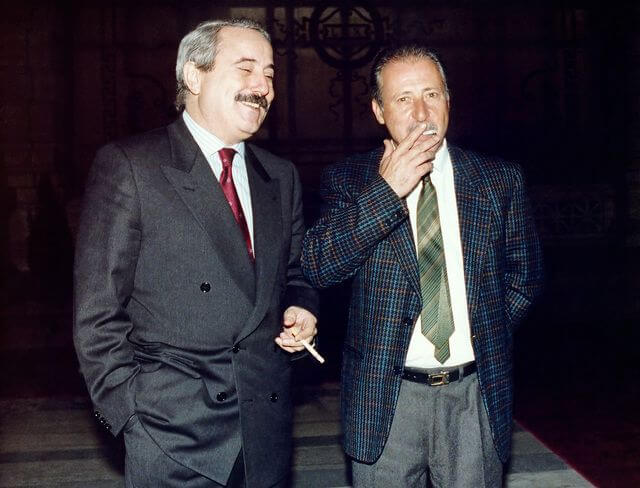 Judges and childhood friends Giovanni Falcone and Paolo Borselino.
Judges and childhood friends Giovanni Falcone and Paolo Borselino.History of Sicilian Mafia: Conclusion
The history of Sicilian Mafia goes back more than a century and a half. Even before that, the island was crawling with bandits. However, the organized Mafia began with the unification of Italy in 1861.
Since then, the Mafia has changed its form many times. New leaders have risen to replace the old, each more brutal than the last.
At the same time, the Mafia's means of making money have changed from extortion and kidnapping to international drug trafficking, construction, and politics.
Sicily is home to many famous mafia criminals. It is often forgotten that there have been just as many brave opponents of the Mafia. Thanks to their persistent efforts, Cosa Nostra has slowly lost its foothold.
Many of those who opposed the Mafia have been killed. This includes the most famous victims, Judges Falcone and Borselino. Although dead, their legacy still goes on. It continues to influence anti-mafia work in Sicily and elsewhere in Italy.
(This page last edited: March 26, 2025)
Recent Articles
-
Sicilian Food - Rich Flavors, Endless Passion
Apr 09, 25 09:54 AM
All you need to know about Sicilian food, its ingredients and history. -
Things to Do in Palermo - Tips for a Perfect Holiday
Apr 05, 25 04:27 AM
Things to Do in Palermo - From historic landmarks to delicious food, this guide has it all. -
The Story of Tommaso Buscetta: From Mafia Boss to Key Witness
Mar 30, 25 05:12 AM
Tommaso Buscetta built Sicilian Mafia into a global empire - which he then destroyed.
Follow MANY FACES OF SICILY on Facebook, Instagram, Bluesky & Pinterest
Contact: vesa@manyfacesofsicily.com
